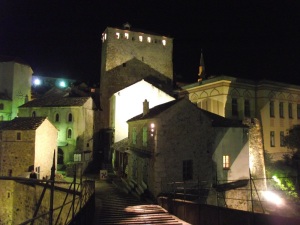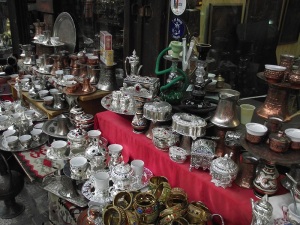
This is the last post in a series I’ve done on visiting the real-life locations your story is set in.
Last week I asked how well you thought you could write about a place you’ve never seen, and I gave nine reasons you should visit your setting if at all possible.
Today I’m giving you some tips I learned while on my own research trip in Bosnia. Some of these are things you can do without visiting a place – they just take a little more effort to search out.
1. Don’t wait until you go to start researching or writing your story.
It would be easy for you to think, “Oh, I’ll learn about the history of my setting once I’m there.” But something like that is a huge task, and before you know it you’ll be spending more time at the library in the city you’re visiting than you will be experiencing the details you can’t access at home.
It’s equally tempting to say, “I can’t start writing this story until I know what the setting looks like.” The problem is that, by the time you get home and start writing your story, you’ll most likely have forgotten the sensory details you discovered. The trip will no longer be fresh in your mind.
2. Focus on the things you can’t discover online or at home.

Drink in all the sensory details of a place while you’re there. What does the food smell like? Are are the seasons reflected in nature – are there wildflowers blooming? Leaves changing color? How is the place lit at night? What kind of wildlife is there?
Draw comparisons between unusual objects and familiar ones. This will not only help you remember details but, if they’re important enough to include in your story, they’ll help readers who are unfamiliar with your setting imagine it better.
3. Seek out local knowledge.
Talk to people. Set up interviews before you go – they don’t have to be formal. Chat about the weather, politics, family, anything you think may be important. Even if these details don’t make the final cut in your story, they’ll help you have a much greater understanding of your setting and that will almost certainly be reflected in the richness of your descriptions.
Also, go to local bookstores and information centers to seek out books written by local authors. I found some fantastic (and deeply troubling) non-fiction books and novels about life for women during the war in Bosnia. Yes, they’re available on Amazon, but so are hundreds of other books so I never would have found them. These are books that people locally thought were worth reading.
4. Bring home memory triggers.

My memory sucks so bad that my husband jokes I look startled every time he walks into a room. He introduces himself to me several times a week.
Even if you’ve got a great memory, bring home reminders. Take lots of photos of all kinds of details. For example, I found the ground in Mostar to be really different than anywhere else I’d been. The cobblestones were big enough to hurt my feet through my thin shoes, and slippery enough to make me realize my hero and heroine would be sliding around when being chased through the town. So I’ve got lots of photos of Mostar’s streets.
Buy a trinket that you get excited about.
Bring an audio recorder and tape people’s voices – always with their permission, of course. This will help you when trying to describe what people sound like, and will help you remember different speech patterns and vocabulary they use.
Do you have any tips for taking a research trip? If you can’t visit the place your story is set in, can you still do any of these things?

oh man, all of these posts are making me want to take the trip of my novel so badly! i’m trying to work out ways i could do it… thanks so much for the inspiring advice!
You’re welcome! Hope you get to go. 🙂